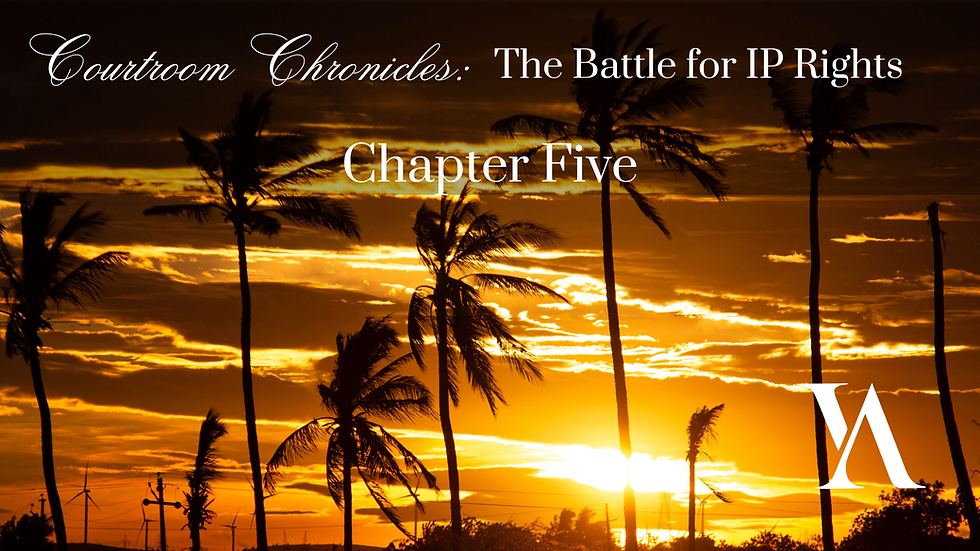
Case: Palmgold Leisure Sdn Bhd vs. Palmgold Corporation Sdn Bhd [2024] CLJU 140
Key Details of the IP Case:
Palmgold Leisure Sdn Bhd initiated an Originating Summons against Palmgold Corporation Sdn Bhd and the Registrar of Trademarks, Malaysia. The case centered on challenging the Registrar's decision to dismiss Palmgold Leisure's opposition to Palmgold Corporation's trademark applications and to allow their registration. The court's ruling primarily addressed the issues of locus standi and the correctness of the IP Registrar’s decision regarding the first use of the trademarks.
Trademark in dispute:
"PALMGOLD"
Legal Arguments and Rulings:
The court found that Palmgold Leisure lacked locus standi to file the Originating Summons. As noted in the judgment, "As the Plaintiff’s Statutory Declaration positively asserts that the proprietor of the Plaintiff’s Marks / Palmgold Marks is actually Tan Sri ... and not the Plaintiff, then Tan Sri ... (and not the Plaintiff) was the proper party who should have lodged the Notices of Opposition to the Registrar, and also filed OS-7 and OS-8." This conclusion was drawn because Palmgold Leisure itself asserted that Tan Sri ..., not the company, was the actual proprietor of the "Palmgold" marks.
The court further supported the Registrar’s finding that Palmgold Corporation was the first to use the "Palmgold" marks in the course of trade, thereby affirming its rightful claim to the trademarks. The judgment emphasised, "The common law ownership of a trademark requires the claimant establishing its entitlement to it not by showing that it is the creator of the identifier but rather, by reason of its use as a trademark on goods in the course of its trade."
An extract from the judgement is as follows:
"[30] the Plaintiff and Tan Sri ... have clearly confused the founder/creator of a trademark with its proprietor. In law they are not the same. While the creator of a trademark may assert copyright ownership to it, common law ownership of a trademark is not based on who had designed and created the trademark, but who had first used it in the course of trade.
[31] In paragraph [37] of the Judgment of the Federal Court in Mesuma Sports Sdn Bhd v. Majlis Sukan Negara Malaysia (Pendaftar Cap Dagangan Malaysia, Interested Party) [2015] 6 MLJ 465, Azahar FCJ said:
“We agree with the submissions of learned counsel for the defendant to this extent. Whilst the creator or designer of an indicator as a trademark or source identifier may well be the copyright owner or registered design owner, the person is not automatically the trade mark owner.
He may enforce his copyright or industrial design right but not necessarily his trademark rights. There is a clear distinction between the creator of a mark and user of a mark.
To put the point differently, common law proprietorship is not based on who first designed or created the trademark or source identifier in question. The common law ownership to a trademark requires the claimant establishing its entitlement to it not by showing that it is the creator of the identifier but rather, by reason of its use as a trademark on goods in the course of its trade.”
Practical Implications:
This case emphasises the critical importance of accurately identifying the true proprietor of a trademark when engaging in legal actions. This decision highlights the necessity for businesses to maintain clear evidence of trademark ownership and first use in trade to support their claims effectively. Ensuring that the correct party files legal challenges is essential for the success of any opposition or defence in trademark disputes.
My Comments:
This ruling underscores the necessity of thorough and precise documentation regarding trademark use and ownership. For businesses, it is crucial to maintain comprehensive records and to ensure that any legal actions are undertaken by the appropriate parties. As the judgment states, "In law, the creator of a trademark and its proprietor are not the same."
This case serves as a reminder of the importance of understanding the legal distinctions between trademark creation and proprietorship, as well as the need for solid evidence to substantiate claims. The outcome of this case also reflects the importance of aligning legal strategies with the realities of trademark law, particularly in distinguishing between the creator and the proprietor of a mark.
If you have any questions regarding the above article, please contact our Managing Partner, Eugene Yeong.